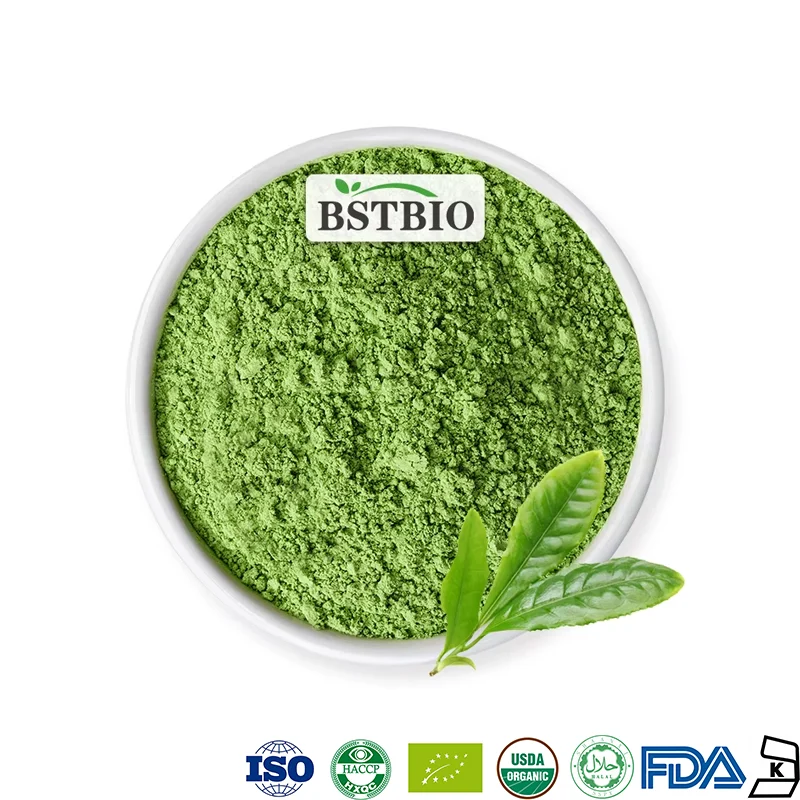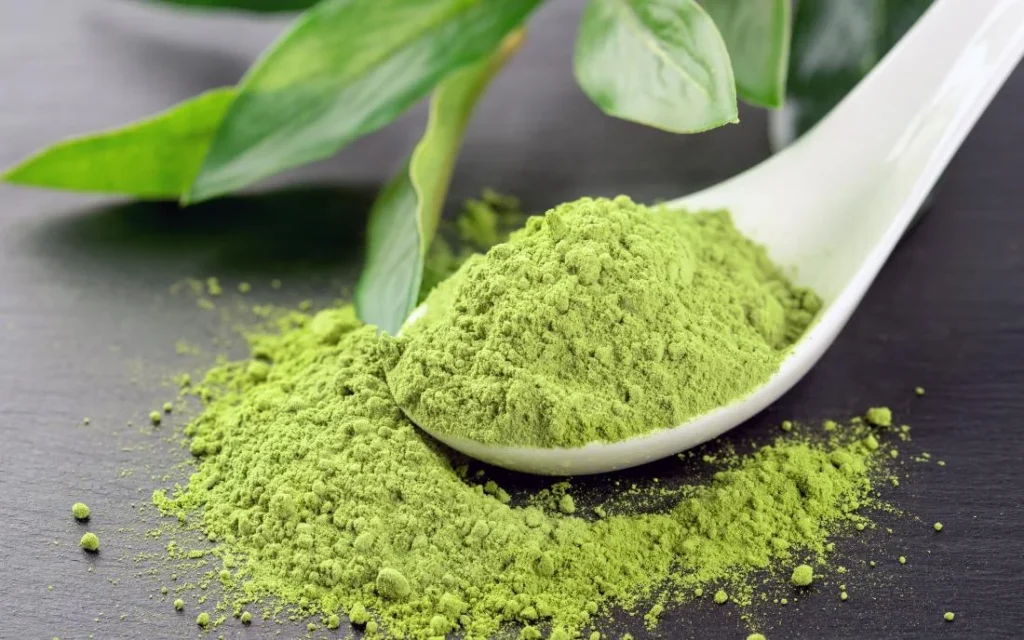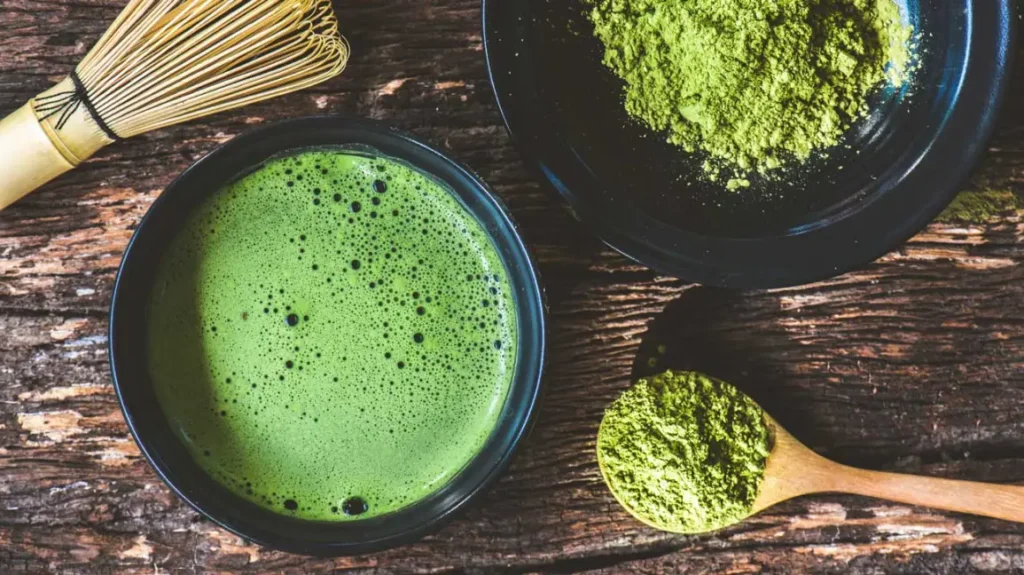Видели ли вы его в меню кафе, любовались ли его ярким зеленым оттенком в десертах в социальных сетях или слышали шепот о его невероятной пользе для здоровья - отрицать это невозможно: Матча стала глобальной суперзвездой в мире велнеса и кулинарии. Но за этим ярким зеленым порошком скрывается богатая история и сложная наука, которая отличает его от обычного чая.
Это руководство поможет вам погрузиться в мир матча. Мы ответим на все ваши основные вопросы, начиная с основ того, что это такое и как его производят, и заканчивая практическими вопросами о сроках хранения и содержании кофеина, и все это будет подкреплено научными данными и знаниями экспертов.
Что такое порошок Матча? Искусство и наука зеленого золота
Во-первых, необходимо установить важнейший факт: Все сорта маття - это зеленый чай, но не все зеленые чаи могут превратиться в маття.
Матча - это уникальный высокосортный зеленый чай в мелком порошке. Его основное отличие от стандартного Порошок зеленого чая заключается в тщательном и трудоемком процессе выращивания и производства, который придает ему особый цвет, вкусовой профиль и превосходную питательную ценность.
- Выращивание в тени (секрет цвета и вкуса): В течение последних трех-четырех недель перед сбором урожая чайные растения (Камелия синенсис) накрывают специальными брезентами, чтобы блокировать прямой солнечный свет. Этот критический этап подвергает растение стрессу, заставляя его перепроизводить хлорофилл (делая листья более яркими и насыщенными зелеными) и L-Theanine. L-теанин - аминокислота, отвечающая за уникальный "умами" (насыщенный, пикантный вкус) матча и его знаменитый эффект "спокойной бдительности".
- Приготовление на пару (сохранение свежести): Сразу после сбора свежие чайные листья подвергаются кратковременной обработке паром. Этот процесс останавливает ферменты окисления, идеально сохраняя яркий зеленый цвет листьев и удерживая в них питательные вещества. В отличие от большинства китайских зеленых чаев, которые обжариваются на сковороде ("вок-жар"), это приводит к другому вкусовому профилю.
- Измельчение камней (создание сверхтонкого порошка): После пропаривания листья сушат. Затем стебли и прожилки тщательно удаляются, оставляя только самую нежную и богатую питательными веществами часть листа, известную как "тенча". И наконец, эта тэнча медленно и тщательно измельчается в микроскопически тонкий порошок с помощью традиционных мельниц из гранитного камня. Этот процесс невероятно медленный: одна каменная мельница может произвести около 40 граммов (1,4 унции) высококачественной матча за час.
Потому что вы потребляете весь чайный листВы получаете не просто настой, а 100% его питательных веществ, что делает матчу в разы более мощным, чем заваренный зеленый чай.
Научно подтвержденная польза матча для здоровья
Тщательный процесс производства концентрирует в матча множество биоактивных соединений, что позволяет получить ряд научно изученных полезных свойств.
- Мощный кладезь антиоксидантов (EGCG): Матча исключительно богата катехинами - классом растительных соединений, которые действуют как мощные антиоксиданты. Наиболее заметным из них является эпигаллокатехин галлат (EGCG). Антиоксиданты крайне важны для здоровья, поскольку они нейтрализуют вредные свободные радикалы в организме, защищая клетки от повреждения, уменьшая воспаление и снижая риск развития хронических заболеваний.
Пример из практики: Исследование, опубликованное в журнале Журнал хроматографии A обнаружили, что концентрация EGCG, получаемого из питья матча, достигает В 137 раз больше чем в других видах зеленого чая. Это делает его одним из самых мощных источников антиоксидантов.
- Улучшает работу мозга, придавая ему "спокойную бдительность": Это фирменный эффект матча. Сочетание кофеина и высокой концентрации L-теанина создает уникальную синергию. L-теанин способствует выработке альфа-волн в мозге, которые ассоциируются с состоянием расслабленного бодрствования и ясности ума без сонливости. Он также повышает уровень успокаивающих нейротрансмиттеров, таких как серотонин и ГАМК. Эта синергия приводит к устойчивому, целенаправленному приливу энергии в течение нескольких часов, без нервного напряжения и последующего спада, связанного с кофе.
- Может поддерживать здоровье сердца: Катехины зеленого чая, особенно EGCG, были подробно изучены на предмет их положительного влияния на здоровье сердечно-сосудистой системы. Исследования показывают, что они могут способствовать снижению уровня общего и "плохого" холестерина ЛПНП, а также триглицеридов. Предотвращая окисление холестерина ЛПНП - ключевой этап в развитии атеросклероза, регулярное употребление матча может способствовать укреплению здоровья сердца.
- Потенциальный стимул для метаболизма и контроля веса: В некоторых исследованиях было показано, что EGCG ускоряет метаболизм и усиливает сжигание жира. Хотя это не волшебная таблетка для похудения, включение матча в здоровое питание и активный образ жизни может стать вспомогательным средством. Исследование, проведенное в журнале Американский журнал клинического питания предположили, что экстракт зеленого чая, богатый катехинами, может усиливать термогенез (скорость сжигания калорий организмом).
Просрочен ли порошок матча или испортился?
Прямой ответ: да. Матча - невероятно нежный, свежий продукт. Он очень чувствителен к четырем своим главным врагам: свету, теплу, воздуху (кислороду) и влаге.
Чтобы понять, каков срок годности матча, нужно различать "срок годности" и момент, когда он действительно "портится".
- Лучшая дата: Дата на упаковке означает срок, в течение которого матча сохраняет свой оптимальный цвет, аромат и вкус. Для невскрытого, правильно хранившегося контейнера это обычно От 12 до 18 месяцев с даты производства.
- После открытия: Как только пломба нарушена, часы начинают тикать гораздо быстрее. Порошок начинает быстро окисляться. Для достижения наилучших результатов настоятельно рекомендуется употреблять открытую матчу в течение 1 - 2 месяца.
Так может ли матча "испортиться" до такой степени, что станет небезопасным? В отличие от молока или мяса, матча редко "портится" так, что становится вредной из-за размножения бактерий. Однако ее качество будет резко ухудшиться со временем или при неправильном хранении. Вы можете легко определить, что ваша матча потеряла свою жизненную силу, по этим основным признакам:
- Цвет: Свежая, качественная матча имеет яркий, электрический или нефритово-зеленый цвет. Если ваш порошок стал тусклым, желтоватым или коричневатым "болотно-зеленым", значит, он окислился и уже не свежий.
- Аромат: Свежая матча обладает сладким, растительным и слегка пикантным (умами) ароматом. Несвежая матча теряет эту сложность и пахнет плоско, как сухое сено или пыль.
- Вкус: Хорошая матча - гладкая, кремовая, с насыщенным вкусом умами и нотками сладости. Несвежая матча теряет все нюансы, и ее вкус будет чрезмерно плоским и горьким.
- Пищевая ценность: По мере окисления ценные антиоксиданты, в том числе EGCG, разрушаются, что значительно снижает его полезные свойства.
Как правильно хранить порошок матча:
- Запечатайте его наглухо: Всегда следите за тем, чтобы контейнер был абсолютно герметичный. Лучше всего использовать оригинальную запечатанную банку.
- Охладите: Храните запечатанную матчу в холодильник это лучший способ сохранить его свежесть.
- Избегайте света и тепла: Никогда не храните матча в стеклянной банке на прилавке или рядом с плитой.
- Важнейший совет: После того как достали матча из холодильника, всегда давайте контейнеру остыть до комнатной температуры в течение нескольких минут, прежде чем открывать его. Это предотвращает образование конденсата внутри жестянки, который может привести к попаданию влаги, комкованию и быстрому разрушению.
Содержит ли порошок матча кофеин?
Да, и в значительном количестве. Это часто вызывает недоумение у многих новых пользователей.
- Почему в нем содержится кофеин: Поскольку вы потребляете весь измельченный чайный лист, вы получаете 100% его компонентов, включая весь кофеин.
- Сколько кофеина? Стандартная порция матча (из 1-2 граммов, или ½-1 чайной ложки порошка) обычно содержит от 30 до 70 мг кофеина.
- Для сравнения:
- Чашка обычного заваренного зеленого чая: ~20-30 мг кофеина.
- Стандартная чашка капельного кофе: ~95-150 мг кофеина.
- Одна порция эспрессо: ~65 мг кофеина. Таким образом, содержание кофеина в матча значительно выше, чем в обычном зеленом чае, но в целом немного ниже, чем в кофе.
- Для сравнения:
- Синергия L-теанина: Энергия без нервного напряжения Это ключевое отличие матча от кофе. Высокая концентрация L-теанина в матча кардинально меняет то, как ваш организм перерабатывает кофеин. Он действует двумя способами:
- Он замедляет всасывание кофеина в кровь, что приводит к постепенному высвобождению энергии в течение 3-6 часов, а не к резкому всплеску и последующему спаду от кофе.
- Он стимулирует альфа-волны мозга, способствуя состоянию расслабленной сосредоточенности и противодействуя беспокойству и нервозности, которые иногда вызывает кофеин.
Конечный эффект - это состояние "спокойная бдительность". Благодаря этому напитку его предпочитают дзенские монахи во время медитации и современные творческие люди, стремящиеся к устойчивой и ясной концентрации внимания.
Часто задаваемые вопросы (FAQ)
1. В чем разница между церемониальным и кулинарным сортами матча?
- Церемониальный класс: Изготовлен из самых молодых, нежных чайных листьев с самой верхушки растения. Он обладает самым ярким цветом, тончайшей текстурой и гладким, сладким, насыщенным умами вкусом без горечи. Его можно взбивать с горячей водой и пить самостоятельно.
- Кулинарный класс: Изготовлен из чуть более старых листьев, собранных позднее. Он имеет чуть менее яркий цвет и более сильный, насыщенный и слегка горьковатый вкусовой профиль, который предназначен для того, чтобы противостоять другим ингредиентам. Он идеально подходит для латте, смузи, выпечки и приготовления пищи.
2. Почему высококачественная матча стоит так дорого?
Высокая цена является прямым следствием невероятно трудоемкого процесса производства: тщательное выращивание в тени, тщательный сбор только лучших листьев, процесс удаления стеблей и отбеливания, а также чрезвычайно медленное измельчение камня. Каждый этап требует огромного мастерства и времени.
3. Можно ли использовать обычный кухонный венчик или вспениватель молока?
В то время как традиционный бамбуковый венчик (Чейзен) предназначен для идеальной суспензии порошка матча в воде и создания тонкой пены, вы можете использовать ручной электрический вспениватель молока в качестве отличной современной альтернативы. Обычный кухонный венчик, как правило, слишком велик и неэффективен, чтобы правильно разбить мелкие комки.
4. Нарушает ли матча пост?
Технически - да. Чистая матча, приготовленная на воде, содержит небольшое количество калорий (около 3-5 на порцию) и макроэлементов, что нарушит строгий водный пост. Однако для тех, кто практикует прерывистое голодание с более гибким подходом, влияние калорийности минимально и обычно считается приемлемым.
5. Безопасно ли пить матча каждый день?
Для большинства здоровых взрослых людей употребление 1-2 порций матча в день совершенно безопасно и может стать полезной частью сбалансированной диеты. Из-за содержания кофеина его лучше употреблять в первой половине дня, чтобы не нарушить сон.
Для дальнейшего чтения и изучения
Чтобы изучить научные данные и проверить информацию, содержащуюся в этой статье, обратитесь к этим авторитетным ресурсам, основанным на фактах:
Healthline: Надежный информационный портал о здоровье, содержащий исчерпывающие, основанные на фактических данных статьи о продуктах питания и добавках.
Healthline: 7 доказанных способов улучшения здоровья с помощью чая Матча
PubMed - Национальная библиотека медицины: Основная база данных всей биомедицинской литературы, где можно найти оригинальные исследования компонентов матча.
Журнал хроматографии A: Исследование содержания катехина в Матча по сравнению с зеленым чаем
Обзор влияния L-теанина на работу мозга (нутриенты)
WebMD: Еще один надежный источник информации об ингредиентах и полезных свойствах.



